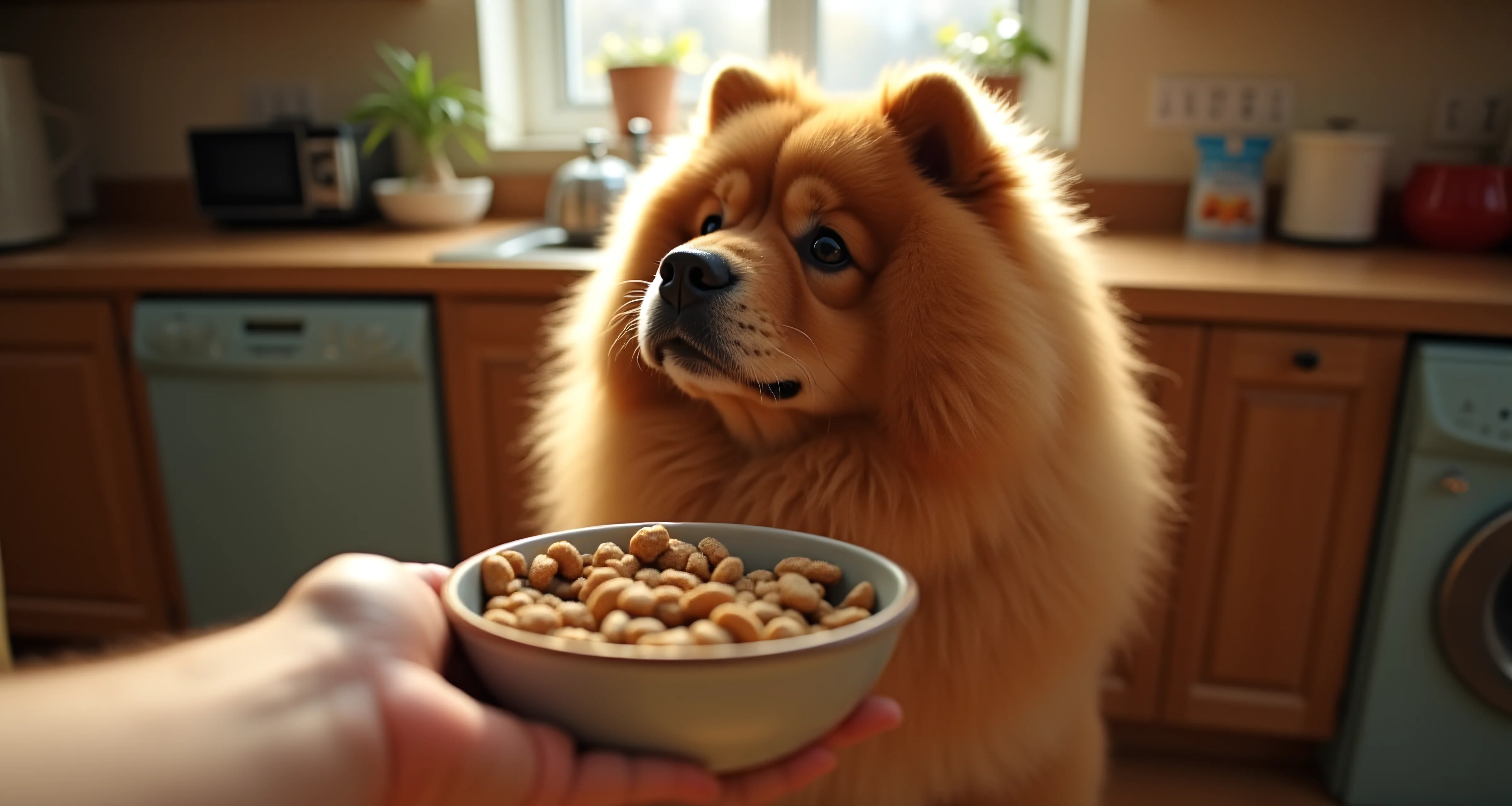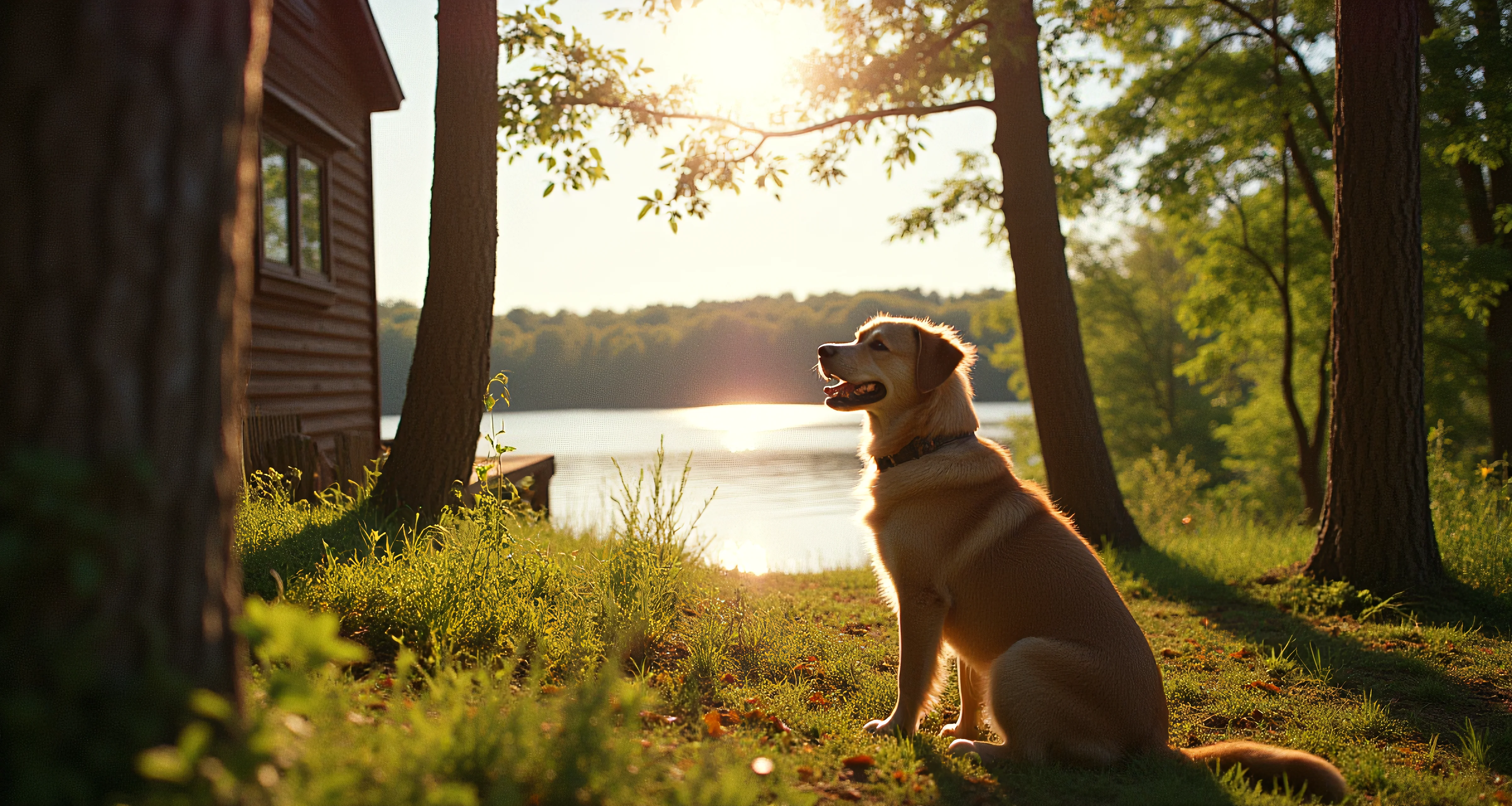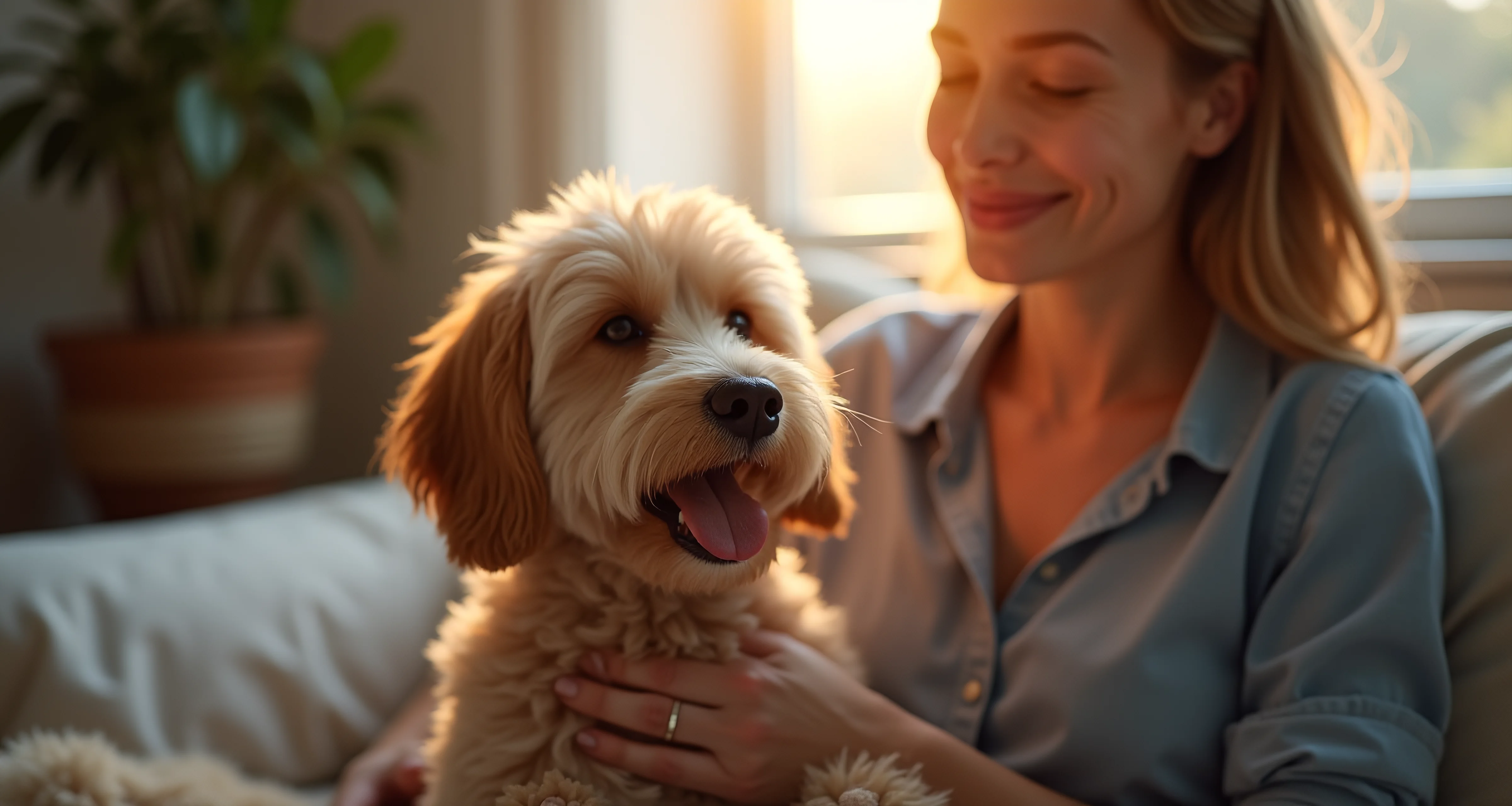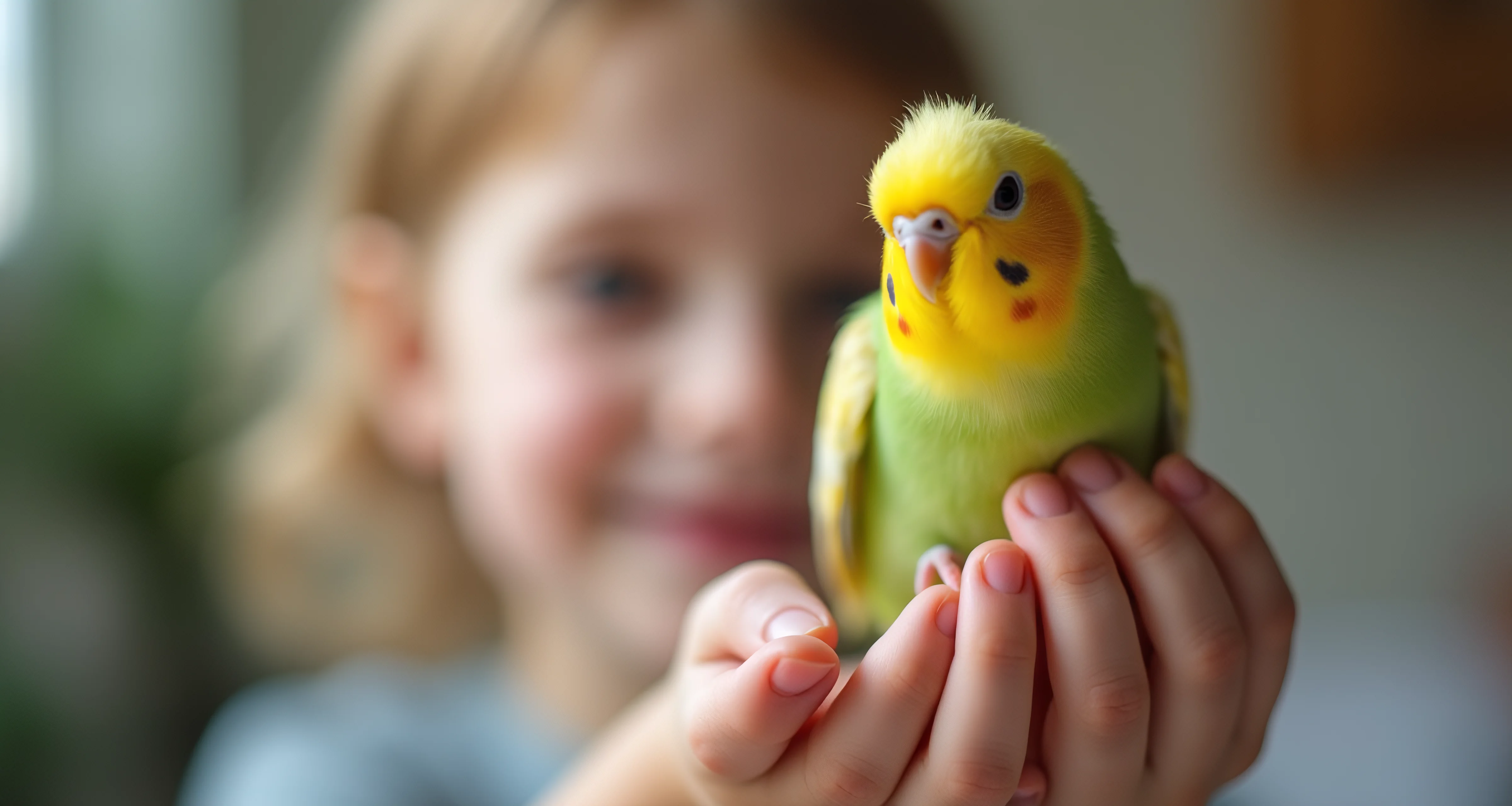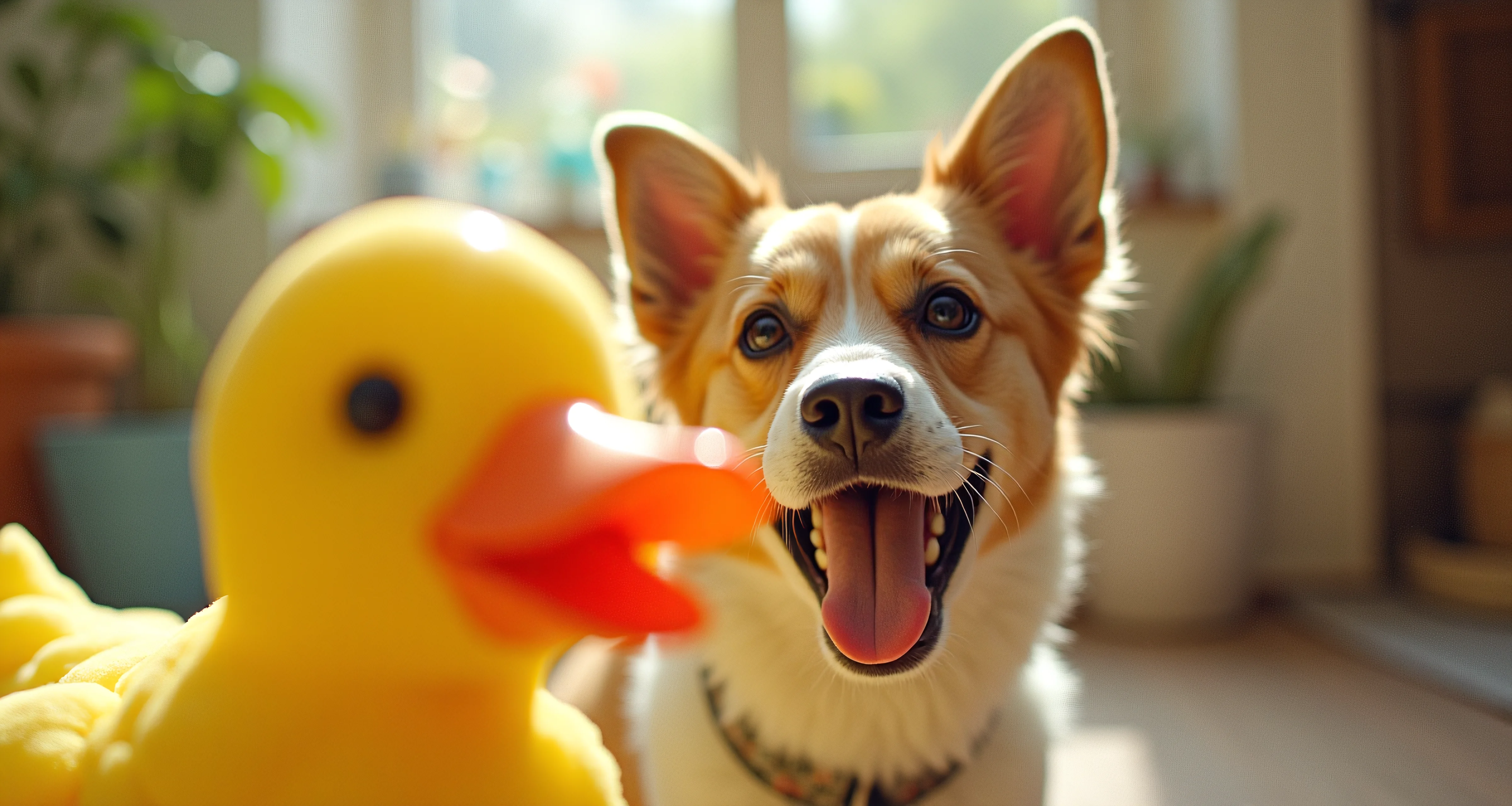Master Bird Launcher Dog Training: Unlock Your Dog's Potential
Learn how a bird launcher for dog training, the right toys for hunting puppies, and tasty DIY dog treats make training fun. Start now to build an amazing bond!
Training your bird dog is one of the most rewarding adventures you'll ever share with your furry partner. It's about more than just teaching commands—it's building an unbreakable bond while awakening your dog's natural instincts. Whether you're working with a bouncy new puppy or a seasoned hunting companion, having the right tools and knowledge makes all the difference.
This guide is your complete roadmap to bird launcher dog training and beyond. We'll walk through everything step by step, using plain language and practical tips. You'll discover:
- How bird launchers for dog training create realistic hunting scenarios
- The best toys for hunting puppies at each growth stage
- Simple, healthy homemade dog training treats recipes
- Trusted bird dog training books that actually help
Forget confusing jargon or sales pitches. We focus only on what works—sharing field-tested methods that build confidence in both you and your dog. You'll learn to read your dog's signals, celebrate small wins, and turn training into quality bonding time.
Let's start this journey together and unlock your dog's natural talents!
Transform your dog from stubborn to superstar! If you've been searching for a way to truly unlock your dog's hidden intelligence and eliminate frustrating behaviors, imagine a future where every command is a joyful response and your bond is unbreakable. Discover the proven system that turns everyday training into an adventure in canine brilliance.
Ready to unlock your dog's full potential? Discover the revolutionary Brain Training for Dogs program today! [Sponsored Link]

Bird Launchers for Dog Training: Understanding & Application
Ever watched your bird dog freeze mid-stride, nose twitching with excitement as they lock onto a scent? That magical moment is what we build toward in training. Bird launchers help create those heart-pounding scenarios safely and consistently, turning instinct into reliable skill. Think of them as your training partners—they let you control when and where birds appear, just like in a real hunt.
Bird launchers come in two main flavors, each with pros and cons:
Manual Bird Launchers:
- 👍 Good for: Folks on a budget or trainers working with helpers. Simple to use—just pull a cord to release the bird.
- 👎 Limitations: You must stand right beside the launcher to trigger it. Tough to manage solo if your dog’s on a lead.
Remote Bird Launchers:
- 👍 Game-changers: Control releases from up to 4 football fields away! Perfect for solo trainers. Quieter operation keeps dogs focused.
- 👎 Trade-offs: Higher upfront cost. Needs batteries and occasional maintenance.
Choosing a launcher isn’t about finding the fanciest one—it’s about matching features to your needs. Keep these in mind:
| Feature | Why It Matters |
|---|---|
| Range | Remote models work up to 400 yards away—essential for realistic solo training. |
| Bird Capacity | Look for easy-load trap doors if using multiple birds per session. |
| Noise Level | Quieter springs prevent spooking sensitive dogs. |
| Durability | Tough nets and springs handle rough field use. |
| Power | Most run on 9V batteries (always carry spares!). |
Quick Comparison Guide:
| Feature | Basic Manual | Mid-Range Remote | Pro Remote |
|---|---|---|---|
| Control | Hand-release only | Remote (good range) | Remote (long range) |
| Cost | $ | $$ | $$$ |
| Durability | Good for light use | Handles regular training | Built for heavy use |
| Noise | Can be loud | Quieter | Designed to be quiet |
| Best For | Beginners on budget | Solo trainers | Advanced field work |
Using a bird launcher is simple when you follow these steps:
- Find Your Spot: Pick open ground with no obstacles. Keep away from roads or livestock.
- Position Securely: Set the launcher on level ground. Engage the safety pin if carrying loaded.
- Load Birds/Dummies:
- Open the trap door
- Place birds or dummies gently in the net
- Secure the door
- Power Up:
- Install fresh batteries in transmitter/receiver
- Turn on both units
- Reset if your model requires it
- Safety Check: Scan for people/pets in launch path. Keep your dog leashed and calm.
- Launch: Press the remote button. Watch your dog’s reaction!
- Reset: Turn off equipment after use. Never leave loaded.
Critical Safety Rules: ⚠️ Always point away from people/animals ⚠️ Use safety pins during transport ⚠️ Keep fingers clear of mechanisms ⚠️ Replace batteries often to prevent misfires
Bird launchers transform training from boring repetitions to thrilling simulations. Try these proven drills:
For Pointing Breeds:
- Hide a loaded launcher in cover
- Send your dog to find it
- When they lock into point, launch the bird remotely
- Reward for holding steady!
For Retrievers:
- Launch a dummy 50 yards away
- Command "Fetch!" as it lands
- Praise when they return it to hand
Advanced Skills:
- Steady to Flush: Dog holds position while bird launches
- Marking Practice: Launch multiple birds for memory retrieves
- Blind Retrieves: Dog fetches unseen fallen birds using your signals
Pro Tip: Start with quail for beginners—they’re less intimidating. Move to pigeons or chukars as skills improve.
Even great gear has hiccups. Here’s how to solve them:
| Problem | Likely Cause | Quick Fix |
|---|---|---|
| Misfires | Dead batteries | Always carry extra 9Vs |
| Bird loaded wrong | Re-position bird evenly | |
| Remote fails | Out of range | Move closer to launcher |
| Signal interference | Avoid power lines/ridges | |
| Loud launch | Noisy springs | Upgrade to quiet-release |
| Dog spooks | Unexpected noise | Start with distant launches |
Treat your launcher right, and it’ll last for years:
- After every use: Brush out dirt/feathers
- Monthly: Check springs and nets for wear
- Storage: Keep in dry place to prevent rust
- Batteries: Remove if storing long-term
We’ve all seen PVC pipe launchers online. While tempting for budgets:
- ❌ They misfire constantly
- ❌ Launch distances vary wildly
- ❌ Safety risks to dogs AND handlers
Stick with purpose-built launchers—your dog’s training (and your peace of mind) are worth it.

Essential Toys for Hunting Puppies: Age-Specific Training & Play
Think playtime is just fun and games? For your hunting pup, it’s serious business. The right toys build instincts, sharpen focus, and turn natural talents into rock-solid skills. Forget random chew toys—we’re talking purposeful play that turns your floppy-eared buddy into a confident hunting partner. Every retrieve, sniff, and tug-of-war session plants seeds for future field success. Specialized toys:
- Awaken natural drives (retrieving, pointing, tracking)
- Teach gentle mouths for carrying birds without damage
- Build focus amid distractions like rustling leaves or wind
- Boost confidence through "winning" at scent games Play isn’t recess—it’s your pup’s first classroom. Match toys to your pup’s growth stage for maximum impact:
| Puppy Age | Key Goals | Top Toy Picks | Play Tips |
|---|---|---|---|
| 8-12 Weeks | Comfort + gentle mouth training | - Soft plush toys<br>- Tiny canvas dummies<br>- Scented fleece tugs | Drag dummies slowly on grass. Reward gentle holds with praise! |
| 3-6 Months | Stronger retrieves + scent skills | - Floating plastic dummies<br>- Bird-scented balls<br>- Short-rope tug toys | Hide scented toys in easy spots (under towels). Celebrate finds! |
| 6-12 Months | Real-world prep + mental stamina | - Heavy Dokken dummies<br>- Wing-covered bumpers<br>- Treat puzzles | Toss dummies into light cover. Use puzzles during downtime. |
Pro Tip: Rub any toy with a bird wing (pheasant, duck) to introduce authentic scents early. Building the Perfect Retrieve:
- Sparks Interest: Wiggle a canvas dummy near your pup’s nose—make it "alive."
- Short Tosses: Gently lob it 1-2 feet. Praise when they touch it!
- Trade Up: Offer a treat when they bring it near you (no grabbing!).
- Name It: Say "Fetch!" as they pick it up.
First Scent Games (5 mins/day):
- Rub a dummy with a bird wing.
- Let your pup sniff it while saying "Find it!"
- Hide it behind a chair (easy mode!).
- Guide them with excited "Good find!" when they locate it. Avoid vet trips with these rules:
- Size Test: Too small? Choking hazard. Too big? Uncomfortable hold.
- Chew Check: Can it survive 10 mins of gnawing? Avoid flimsy plastic.
- Non-Toxic: Only use toys labeled "pet-safe materials."
- Supervision: Always watch play—especially with new toys.
Danger Signs: Loose threads, squeakers that pop out, or rubber that cracks. When in doubt, toss it out!
Bottom Line: Great toys turn your pup’s play into purpose. Start simple, celebrate progress, and always—always—make it fun.
Warning: Are you leaving your dog's TRUE intelligence untapped? While toys are crucial for physical stimulation, many owners miss the mental training that solves stubborn barking, destructive chewing, and anxiety for good. Don't let your dog's hidden genius go to waste.
Unleash ultimate obedience & peace of mind. Access Brain Training for Dogs and master advanced behavior solutions now! [Promotional Offer]

Homemade Dog Training Treats: Vet-Approved Recipes & Training Hacks
Picture this: your bird dog locks eyes with you mid-training, tail wagging like a metronome, waiting for their reward. That moment of connection is pure magic. But what you put in your treat pouch matters more than you think. Homemade training treats aren't just snacks—they're your secret weapon for building focus and trust. Let's whip up some kitchen magic together!
- Total Ingredient Control: No mystery "meat by-products" or artificial junk—just real food you recognize. Perfect for dogs with tummy troubles or allergies.
- Budget Superpower: Spend $5 on ingredients instead of $20 on fancy bags. More money for toys and gear!
- Custom Sizing: Make treats pea-sized for rapid rewards during intense drills.
- Flavor Flexibility: Swap ingredients to match your dog's cravings (chicken fanatic? Salmon lover? Done!).
Pro Tip: Watch your dog's reaction when you open your treat pouch. If they come running like it's dinnertime, you're winning! Golden Rule: Always chat with your vet before changing your dog's diet—especially with allergies or health issues.
Superstar Ingredients (Vet-OK'd):
- 🐔 Proteins: Cooked chicken/turkey (no bones!), lean beef, fish (salmon/tuna)
- 🥕 Veggies: Sweet potato, pumpkin puree (NOT pie filling!), carrots, green beans
- 🍎 Fruits: Apple slices (no seeds!), blueberries, banana bits
- 🌾 Grains: Oats, brown rice, whole wheat flour (if no gluten issues)
- 🥜 Extras: Xylitol-free peanut butter, plain yogurt, tiny cheese bits
DANGER ZONE - NEVER USE: 🚫 Chocolate 🚫 Grapes/Raisins 🚫 Onions/Garlic 🚫 Xylitol (common in sugar-free stuff) 🚫 Macadamia nuts 🚫 Avocado 🚫 Alcohol 🚫 Raw dough
When in doubt? Skip it and grab a dog-safe ingredient! Perfect for high-distraction training days
What You'll Need:
- 1 cup pure pumpkin (not pie filling!)
- ½ cup xylitol-free peanut butter
- 1½ cups whole wheat flour (or oat flour for sensitive pups)
Easy Steps:
- Heat oven to 375°F (190°C). Line baking sheet with parchment paper.
- Mix pumpkin and peanut butter in bowl until smooth.
- Slowly add flour—dough will get thick like playdough!
- Roll dough ¼-inch thick. Cut into tiny squares (pea-sized!).
- Bake 15-20 minutes until golden and firm.
- Cool completely before treating!
Why Trainers Love These:
- Smells irresistible to dogs
- Easy to break into tiny rewards
- Gentle on sensitive stomachs
Mix It Up: Swap pumpkin for mashed sweet potato or use oat flour! Ideal for recall training or tough commands
What You'll Need:
- 1 cooked chicken breast (shredded)
- ½ cup mashed sweet potato
- ¼ cup oats
- 1 egg
Easy Steps:
- Heat oven to 350°F (175°C). Prep baking sheet with parchment.
- Pulse chicken in food processor until fluffy.
- Mix chicken, sweet potato, oats, and egg in bowl.
- Roll into pea-sized balls (gets sticky—wet hands help!).
- Bake 20-25 minutes until firm.
- Cool fully before using.
Why These Rock:
- Protein punch keeps dogs motivated
- Chewy texture holds attention
- Strong scent cuts through wind/field smells
Mix It Up: Try ground turkey instead of chicken! Short on time? These require zero cooking:
- Boiled Chicken Bits: Dice cooked chicken into tiny pieces—the ultimate high-value reward!
- Sweet Potato Chewies: Thinly slice sweet potatoes, bake at 250°F (120°C) for 3 hours until chewy.
- Pumpkin Pops: Freeze pumpkin puree in ice cube trays—refreshing for summer sessions!
- High-Value = Big Wins: Use chicken/pumpkin bites for recalls or scary situations. Save basic biscuits for easy "sits."
- Size Matters: Pea-sized treats = faster eating = more reps!
- Delivery Tricks:
- Toss treats on ground to reset focus
- Hand-feed gently to build trust
- Use a consistent "yes!" before treating
Scenario Cheat Sheet:
| Training Moment | Best Treat Choice | Pro Tip |
|---|---|---|
| Recall training | Chicken chews | Wave treat at nose before calling |
| New command | Peanut butter bites | Reward within 2 seconds of success! |
| Low-distraction walk | Oat biscuits | Treat every 3-4 steps of good heeling |
| Overcoming fear | Extra-stinky salmon bits | Pair treats with happy talk! |
- Fridge Life: 5-7 days in airtight container
- Freezer Hack: Store 3 months in freezer bags! Thaw small batches overnight in fridge.
- Spoilage Signs: Toss if moldy, smelly, or discolored.
Troubleshooting:
- Too Crumbly? Add spoonful of water or broth next time
- Too Soft? Bake 5 minutes longer or add extra tablespoon of flour
- Dog Uninterested? Try liver or tuna for stronger smells!
Remember: Great training builds from trust—and nothing builds trust like delicious, safe rewards made with love. Happy baking and happy training!

Essential Bird Dog Training Books & Supplementary Resources
Learning how to train your bird dog is a journey, and having the right information makes all the difference! Think of books and other resources as your friendly coaches, offering tips and step-by-step help right when you need them. This section covers the best bird dog training books and other handy tools to guide you and your furry partner toward success.
Finding a good training book can feel overwhelming with so many choices. We've picked three highly trusted bird dog training books that trainers and owners rely on. Each offers a different approach, so you can find the perfect fit for you and your dog:
“The Bird Dog Training Manual”
- What Makes It Special: This book is famous for being easy to understand, especially if you're just starting out. It focuses on positive methods – lots of praise and rewards – to build a strong, happy foundation with your pup.
- Best For: Brand new bird dog owners, folks training their first puppy, or anyone who wants gentle, encouraging methods.
“Training the Gun Dog” by William R. Koehler
- What Makes It Special: This is a classic, respected guide. It explains traditional training techniques used for generations, including clear ways to correct unwanted behaviors alongside rewards. It dives deep into advanced field skills.
- Best For: Experienced trainers, owners familiar with dogs, or those wanting a detailed look at classic hunting dog training methods.
“The Complete Guide to Bird Dog Training”
- What Makes It Special: This book is like a big toolbox! It covers a wide range of topics, often including tips specific to different bird dog breeds (like pointers, setters, or retrievers) and solutions for common training challenges.
- Best For: Owners who want one comprehensive resource covering everything from puppy basics to solving problems in the field.
Not every training method works for every dog. Understanding the main approaches helps you pick the book that matches your style and your dog's personality:
- Positive Reinforcement: This style is all about rewarding the good stuff! When your dog does what you ask (like holding a point or bringing back a dummy), they get praise, a treat, or playtime. This builds a strong, trusting bond and keeps learning fun. Great for sensitive dogs or first-time trainers.
- Traditional Methods: These combine rewards with clear corrections for mistakes. Think of it like clear rules and consequences. It requires careful timing to avoid confusing or scaring your dog, but can be very effective, especially for strong-willed dogs, when done right.
- E-Collar Integration: Some books discuss using electronic collars (e-collars) for training. These can send a signal (like a vibration or small static pulse) to get your dog's attention from a distance. While powerful tools, they demand skill and responsibility to use safely and humanely. Always prioritize understanding how to use them correctly if this method interests you.
Ask Yourself:
- How does my dog learn best? Is she eager-to-please and sensitive? Or more independent and bold?
- What's my experience level? Do I need simple, clear steps? Or am I ready for advanced techniques?
- What specific skills are we working on? Do we need help with basics, retrieving, steadiness, or something else?
Picking a book that feels right for both of you makes training smoother and more enjoyable.
Books are fantastic, but sometimes seeing something in action or talking to others helps even more. Here are other ways to boost your knowledge:
- Online Courses: Look for well-organized video courses created by experienced bird dog trainers. These let you see the techniques demonstrated, which can be super helpful. Search for reputable platforms focused on hunting dogs.
- Helpful Videos: Many skilled trainers share free tips and demonstrations on video platforms. Look for channels with clear explanations and consistent, positive training methods. Watching real dogs learn can be inspiring!
- Connect with Others: Talking to fellow bird dog owners is incredibly valuable. Online forums dedicated to hunting dogs are places where people share stories, ask questions, and offer support based on their own experiences. It’s like having a whole community cheering you on.
- Training DVDs: Similar to online courses, DVDs from respected trainers offer visual, step-by-step guides you can watch anytime.
The best resource is the one you will use and understand! Keep these tips in mind:
- Match Your Dog's Personality: A shy dog might blossom with positive reinforcement resources, while a very confident dog might respond well to a resource that includes balanced methods. Choose what suits your dog.
- Be Honest About Your Experience: If you're new, start with beginner-friendly books or courses that explain things simply. If you've trained dogs before, you might dive into more advanced materials.
- Target Your Challenges: Stuck on a specific problem like gun shyness or poor retrieving? Look for resources that directly address that issue. Many books and courses have chapters focused on solving common training hurdles.
Remember, these resources are here to support you. Don't be afraid to try different ones until you find the guidance that clicks for you and makes training your bird dog a rewarding adventure.

Real-World Trainer Insights & Community Perspectives
Training a bird dog isn't just about gear and drills—it's about wisdom passed down through generations of handlers who've stood where you stand now. We've gathered hard-won lessons from seasoned trainers and fellow dog lovers to help you avoid common stumbles and build a stronger bond with your hunting partner.
After countless hours in the field, experienced handlers agree on these game-changers:
Remote Bird Launchers = Solo Success: "Trying to train alone with manual launchers is like juggling with one hand tied," says a pro with 20+ years experience. Remote units let you:
- Release birds exactly when your dog locks on point
- Work from 300+ yards away without helpers
- Keep sessions quiet to avoid spooking sensitive dogs
Early Toy Training = Future Champ: Trainers who start pups with purpose-built toys see huge differences:
- Puppies introduced to scented dummies at 8 weeks develop stronger retrieval instincts
- Rotating 3-4 toy types prevents boredom and builds versatile skills
- Tough, non-toxic materials mean safer play and fewer vet visits
Homemade Treats = Tailored Motivation: "My dogs work 30% harder for liver bites than store-bought snacks," shares a championship trainer. The community loves DIY treats because:
- You control ingredients (great for allergy-prone dogs)
- Tiny, consistent sizes keep training flowing smoothly
- Simple recipes cost pennies compared to premium brands
Even good handlers make mistakes. Here's what to watch for:
| Mistake | Why It Backfires | Smart Fix |
|---|---|---|
| Treat Overload | Dogs get overweight or ignore commands without top-tier snacks | Use "everyday" treats for simple tasks, save chicken/liver for big wins |
| Wrong Toy Choices | Broken pieces cause choking; tiny toys teach poor grip | Match toy size to your dog's mouth; test durability with 5-minute chew sessions |
| Skipping Launcher TLC | Misfires frustrate you and confuse your dog | Clean after every use; swap batteries monthly; check springs weekly |
| Rushing the Process | Dogs get confused and lose confidence | Master one skill before adding the next; celebrate small improvements |
| Ignoring Your Dog's Vibe | Scared dogs shut down; bold dogs push limits | Let timid dogs observe launchers from afar first; use firmer commands with stubborn pups |
Golden Rule from the Community: "Watch your dog closer than your gear. When their tail wags during drills, you're winning. When they tense up, slow down."
These shared experiences remind us: the best training happens when we listen—to our dogs, to the land, and to those who walked this path before us. Your next breakthrough is closer than you think!
Join 60,000+ Dog Owners Who Transformed Their Pets! Top trainers agree: the secret to a well-behaved dog isn't just gear, it's a proven system. See why thousands are ditching frustration and building incredible bonds with America's #1 online brain training program.
Ready for a dog that actually listens? See the incredible testimonials and start your transformation today! [Affiliate Link]
Frequently Asked Questions
If you're just starting out, a mid-priced remote bird launcher is your best bet. Yes, it costs more than a manual one, but the remote lets you train by yourself and control the timing perfectly. This is super important for building good habits from day one.
Absolutely! Bird launchers aren't just for hunting dogs. They're fantastic for teaching any dog to fetch, focus, and follow commands. They help build a strong "come when called" and teach your dog to stay calm and steady in exciting situations.
Keep it short and sweet! Aim for 5-10 minute sessions, 2 or 3 times a day. Puppies have short attention spans, so little bursts of fun training work way better than long, boring ones. Always end while they're still having a blast.
Lots of safe, healthy options from your kitchen! Try tiny bits of:
- Boiled chicken
- Plain canned pumpkin (not pie filling!)
- Carrot pieces
- Apple slices (no seeds or core)
Never use: chocolate, grapes, raisins, onions, garlic, or anything with xylitol (a sweetener in some gum and peanut butter).
Take it slow and positive:
- Let your dog sniff the turned-off, empty launcher
- Reward calm behavior near it with treats
- Try quiet launches from 50+ yards away
- Slowly move closer over several sessions Always praise relaxed behavior—never force it!
Focus less on breed labels and more on:
- Your training style: Prefer rewards? Look for "positive reinforcement" books
- Your experience: New trainers need simple step-by-step guides
- Your goals: Need help with retrieving? Steadiness? Pick books that specialize
Three things: consistency, patience, and positivity. Train a little bit most days, not just on weekends. Be patient when your dog makes mistakes – learning takes time. And focus on rewarding the good stuff! This builds a strong bond and makes your dog eager to work with you.
- Training your bird dog is a rewarding journey built on being consistent, patient, and positive.
- Start putting what you've learned into practice with your dog today, using the right tools and treats.
- The best reward is the special bond and shared moments you'll create with your loyal hunting partner.
You've now got everything you need to build an incredible partnership with your bird dog. Think of training as an adventure you take together—one where patience, play, and praise become your most powerful tools.
Here's what you've mastered:
- Bird launchers that turn training into thrilling, real-life hunts
- Purpose-built toys that sharpen instincts at every age
- Homemade treats that fuel focus and build trust
- Trusted books and resources that guide your journey
Remember these three keys that unlock success:
- Consistency: Short, regular sessions beat marathon drills
- Patience: Celebrate tiny wins—progress builds like stepping stones
- Positivity: Make every "good dog!" genuine; your enthusiasm is contagious
Your bond with your hunting partner grows stronger with every retrieve, every point, every quiet moment in the field. There will be muddy paws, hilarious mishaps, and days when nothing goes right—that’s all part of your story. What matters is showing up, staying present, and trusting the process.
The real reward isn’t just a perfectly trained bird dog—it’s the shared sunrise over dew-covered fields, the proud wag when they find that hidden bumper, and the unspoken understanding between you. That connection? That’s where the magic lives.
Now grab your whistle, fill your treat pouch, and step into the field with confidence. Your feathered-winged, tail-wagging adventure is just beginning. Happy training!
